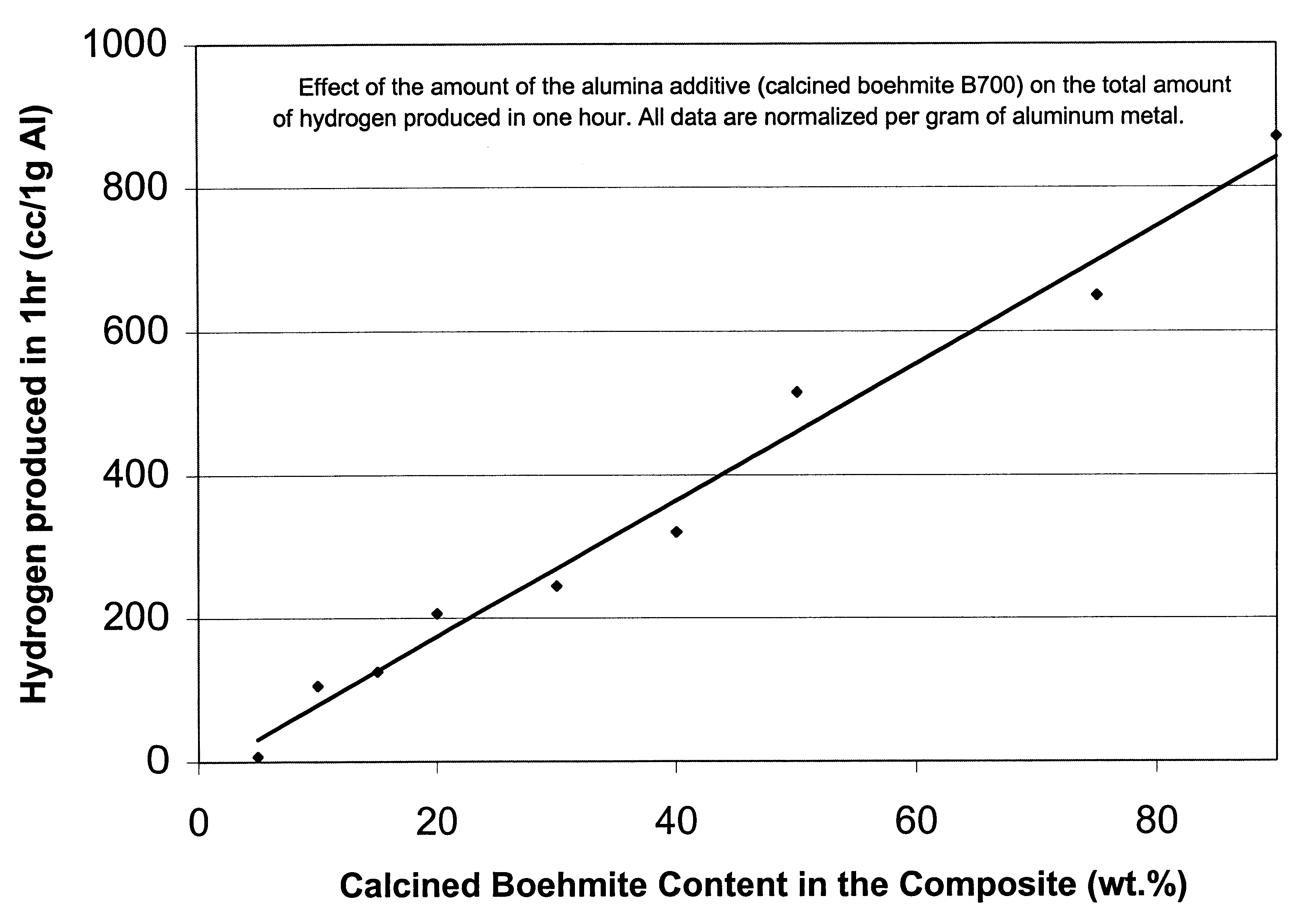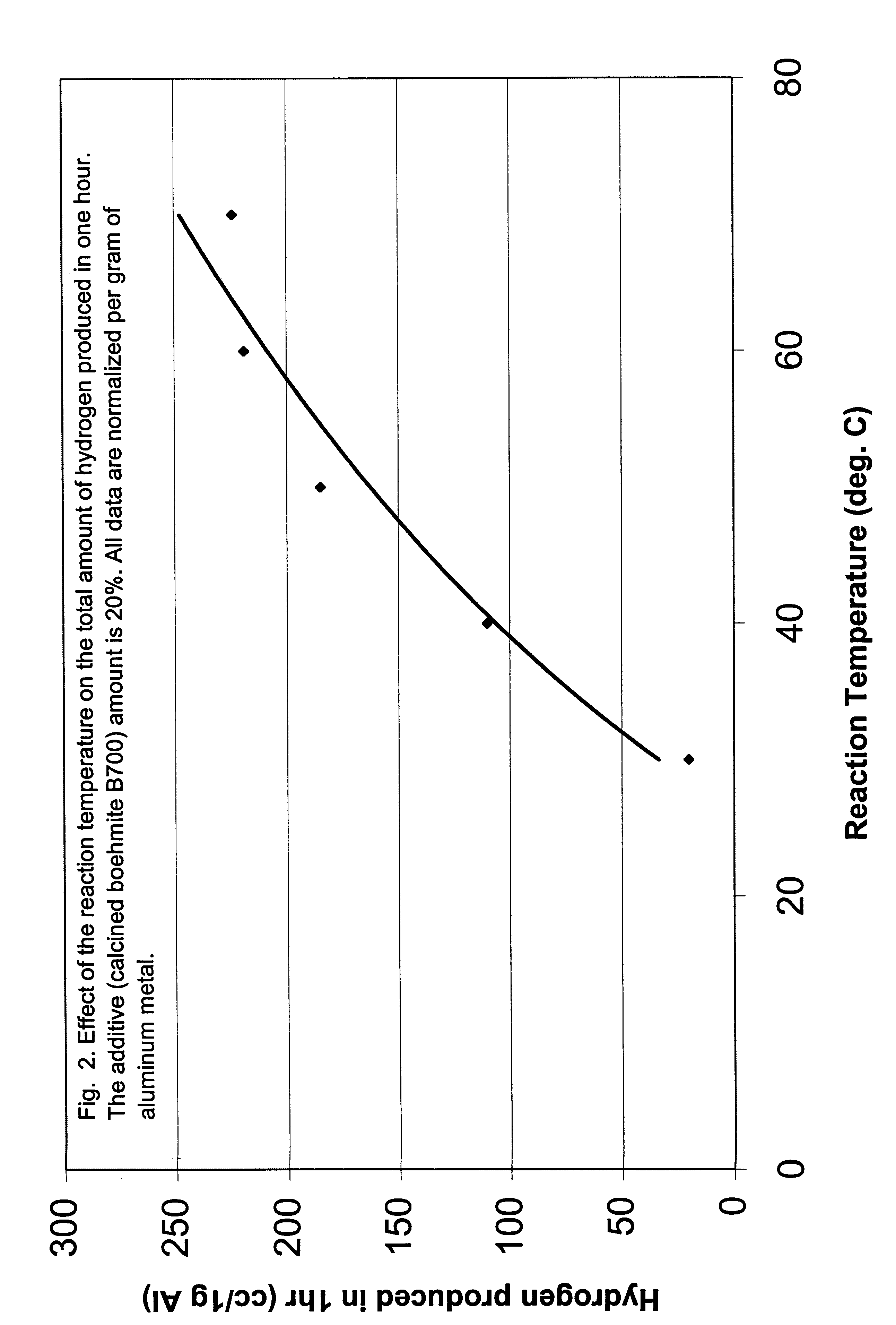Hydrogen generation from water split reaction
a technology of water split reaction and hydrogen generation, which is applied in the direction of hydrogen production, chemistry apparatus and processes, inorganic chemistry, etc., can solve the problems of high cost, high cost, and high cost of hydrogen production, and achieve the effect of reducing cost, avoiding waste, and avoiding was
- Summary
- Abstract
- Description
- Claims
- Application Information
AI Technical Summary
Problems solved by technology
Method used
Image
Examples
examples of specific embodiments
OF THE INVENTION
The following examples clearly illustrate the specific embodiments of the invention, but should not be construed as restricting the spirit or scope of the invention in any way. These example processes to produce hydrogen in Al-assisted water split reaction used Al powder blended with variety of ceramic powders, generally aluminium oxide or hydroxide, in variety of forms and morphologies, as described in the preceding sections. The blending method is critical to initiate and sustain the water split reaction. The high energy blending techniques which produce multiple metal-ceramic interfaces are more effective. The principal process variables included mass ratio of the Al to the ceramic, methods and time of blending the powders, temperature and pH of reaction environment. Reference tests were performed with the separate powders of Al and ceramic, in a variety of environments. The principal parameter measured in all the tests was the total amount of hydrogen (cc) releas...
example 1
Water-Split Reaction for the Reference System: Al Powder Only
The Al powder (99% Al, 80 .mu.m average particle size) was pelletized at 8000 psi and the 1 g pellet dropped to tap water at approximately pH=6 and T=50.degree. C. There was no hydrogen generation after 1 hr test.
example 2
Water-Split Reaction for the Reference System: Al Powder Only
The Al powder (99% Al, 80 .mu.m average particle size) was Spex-milled for 15 min., pelletized at 8000 psi and the 1 g pellet dropped to tap water at approximately pH=6 and T=50.degree. C. The total amount of hydrogen released from the reactor after 1 hr was 10 cc per 1 g Al.
PUM
 Login to View More
Login to View More Abstract
Description
Claims
Application Information
 Login to View More
Login to View More - R&D
- Intellectual Property
- Life Sciences
- Materials
- Tech Scout
- Unparalleled Data Quality
- Higher Quality Content
- 60% Fewer Hallucinations
Browse by: Latest US Patents, China's latest patents, Technical Efficacy Thesaurus, Application Domain, Technology Topic, Popular Technical Reports.
© 2025 PatSnap. All rights reserved.Legal|Privacy policy|Modern Slavery Act Transparency Statement|Sitemap|About US| Contact US: help@patsnap.com



